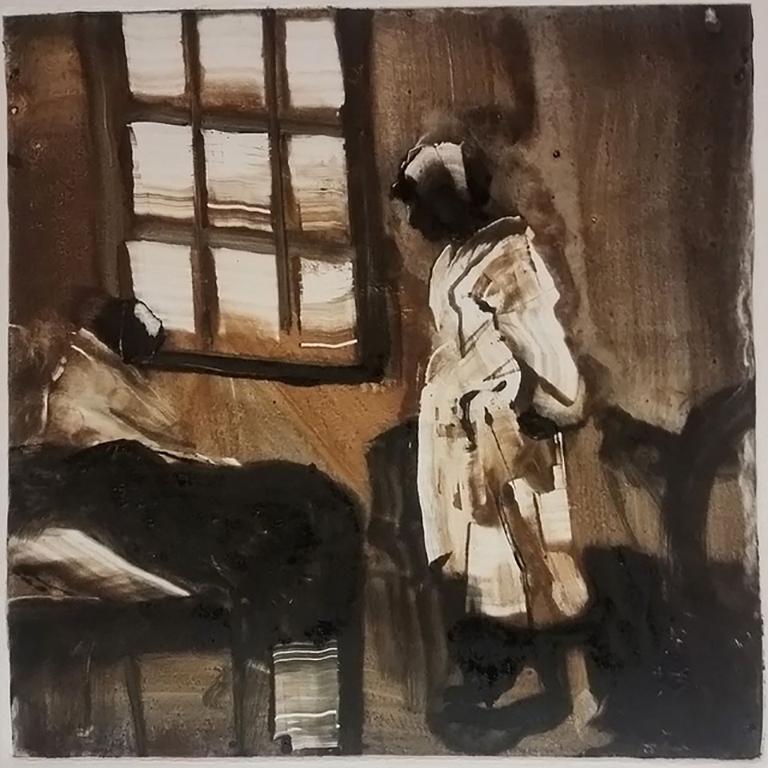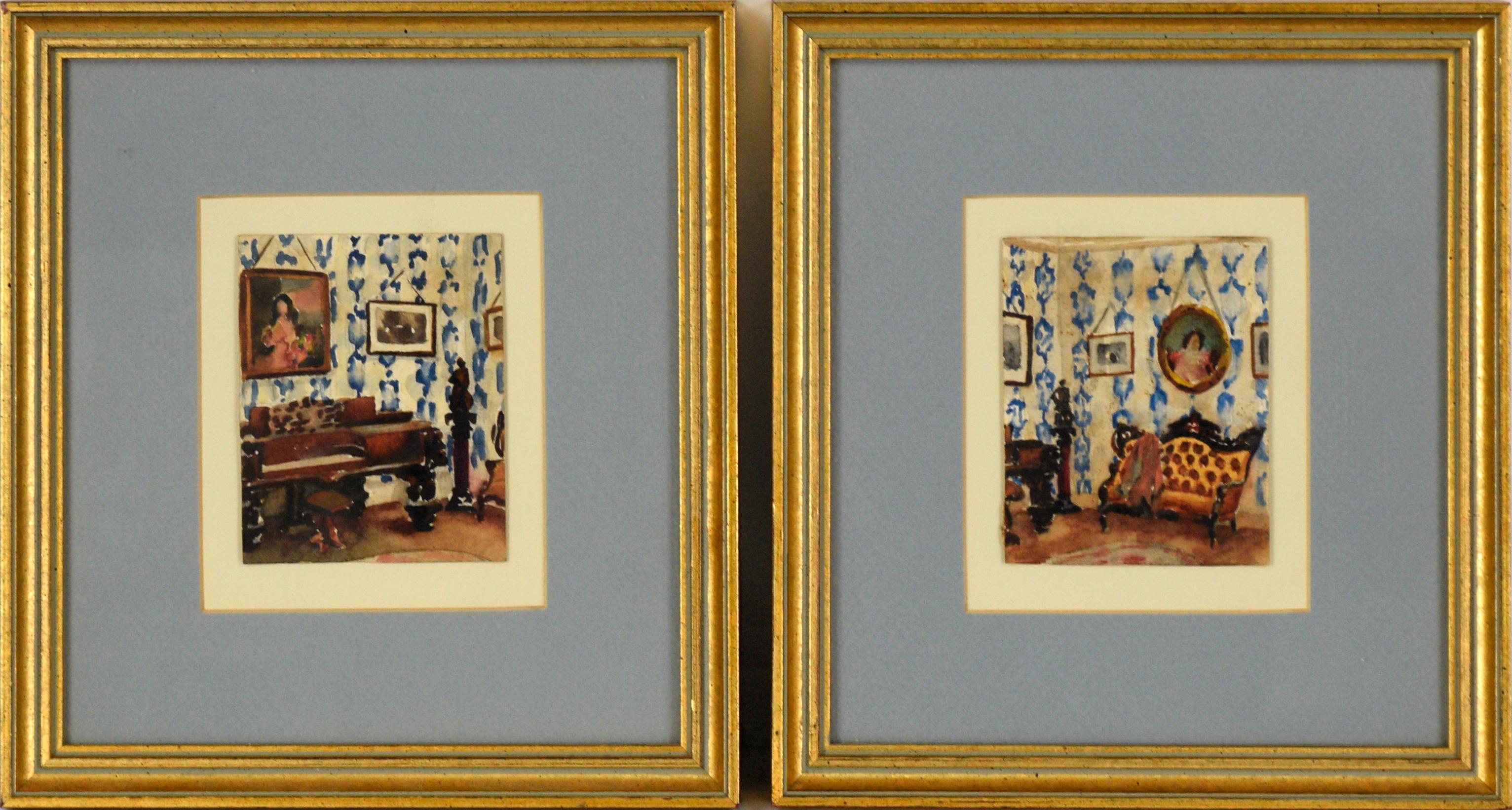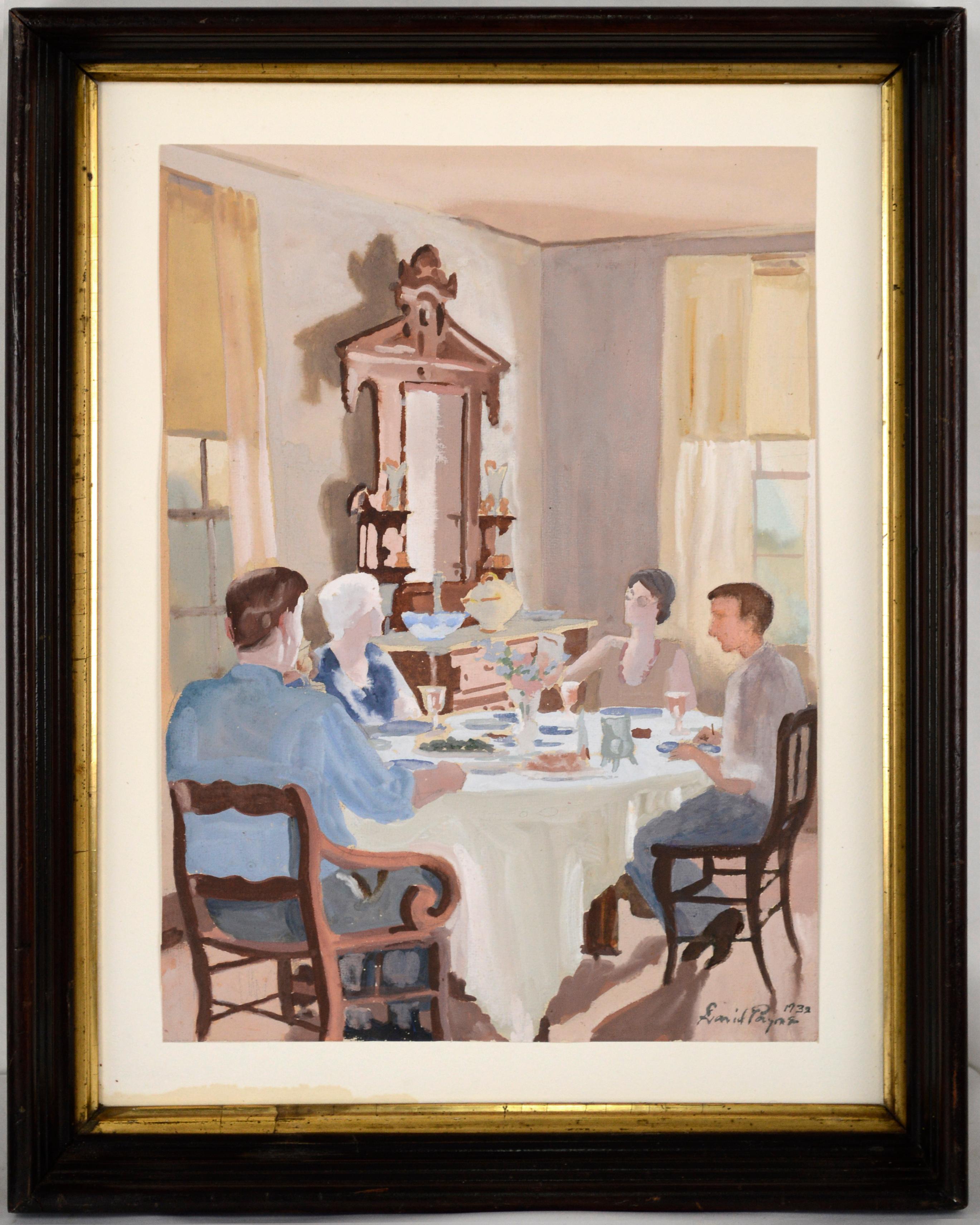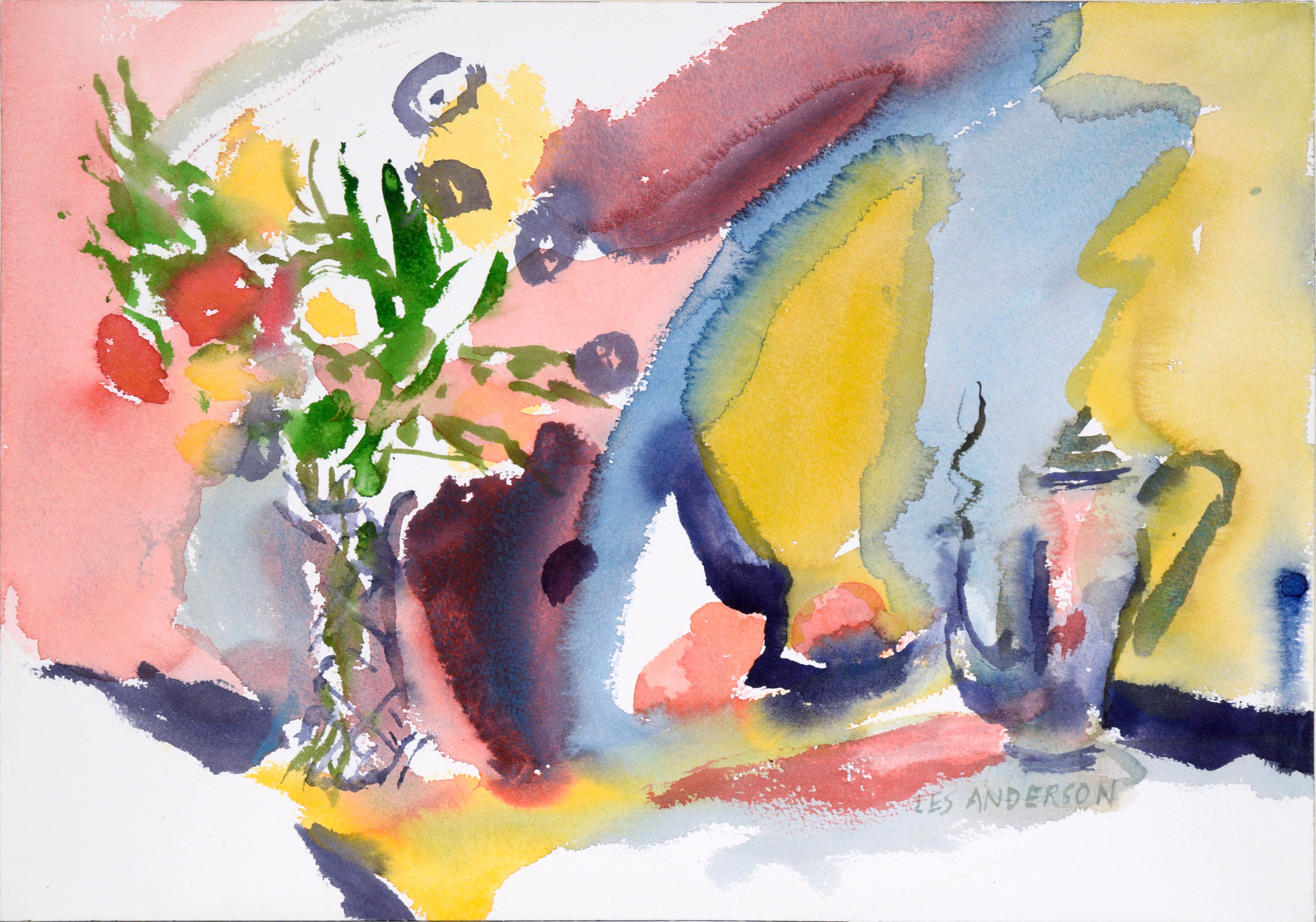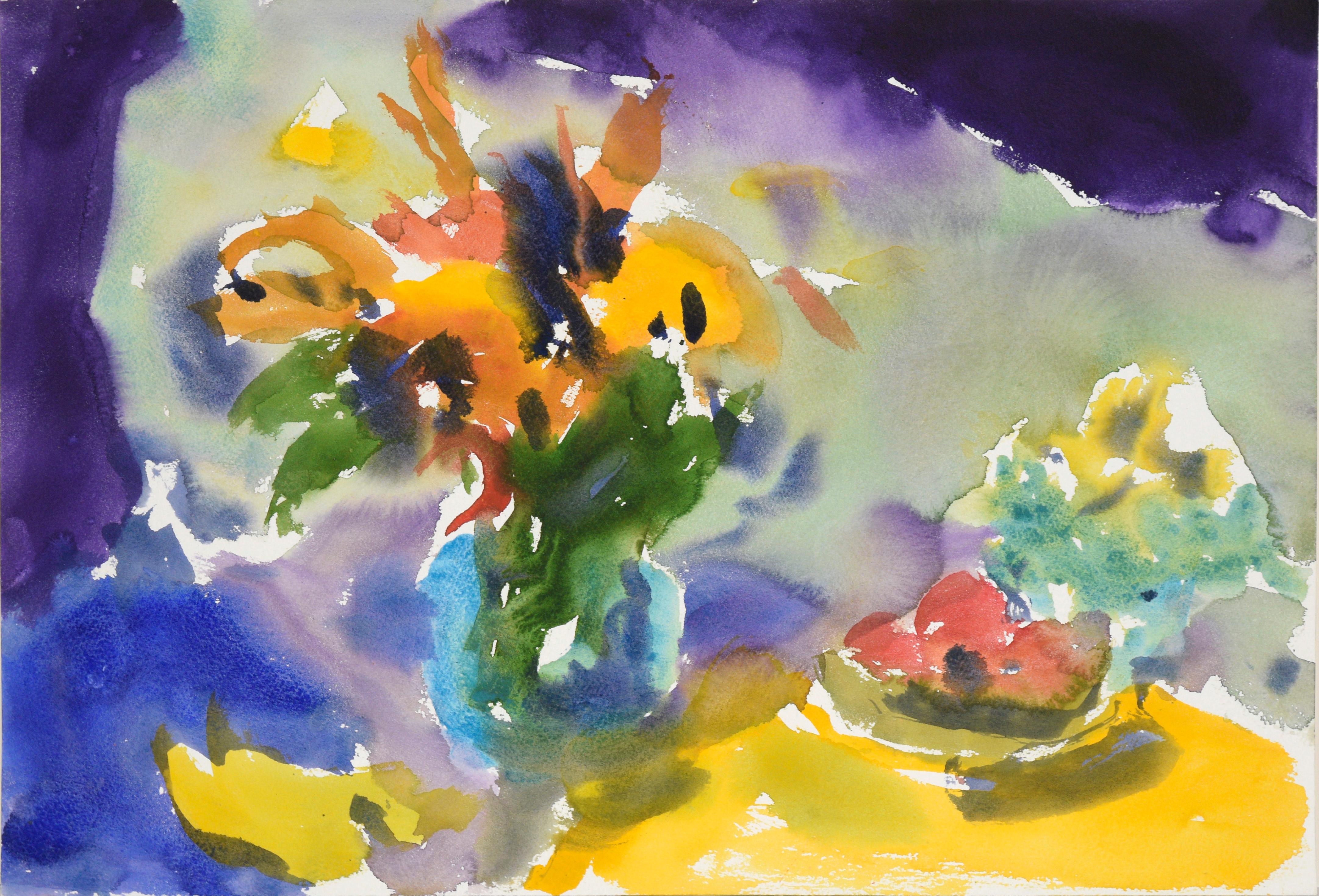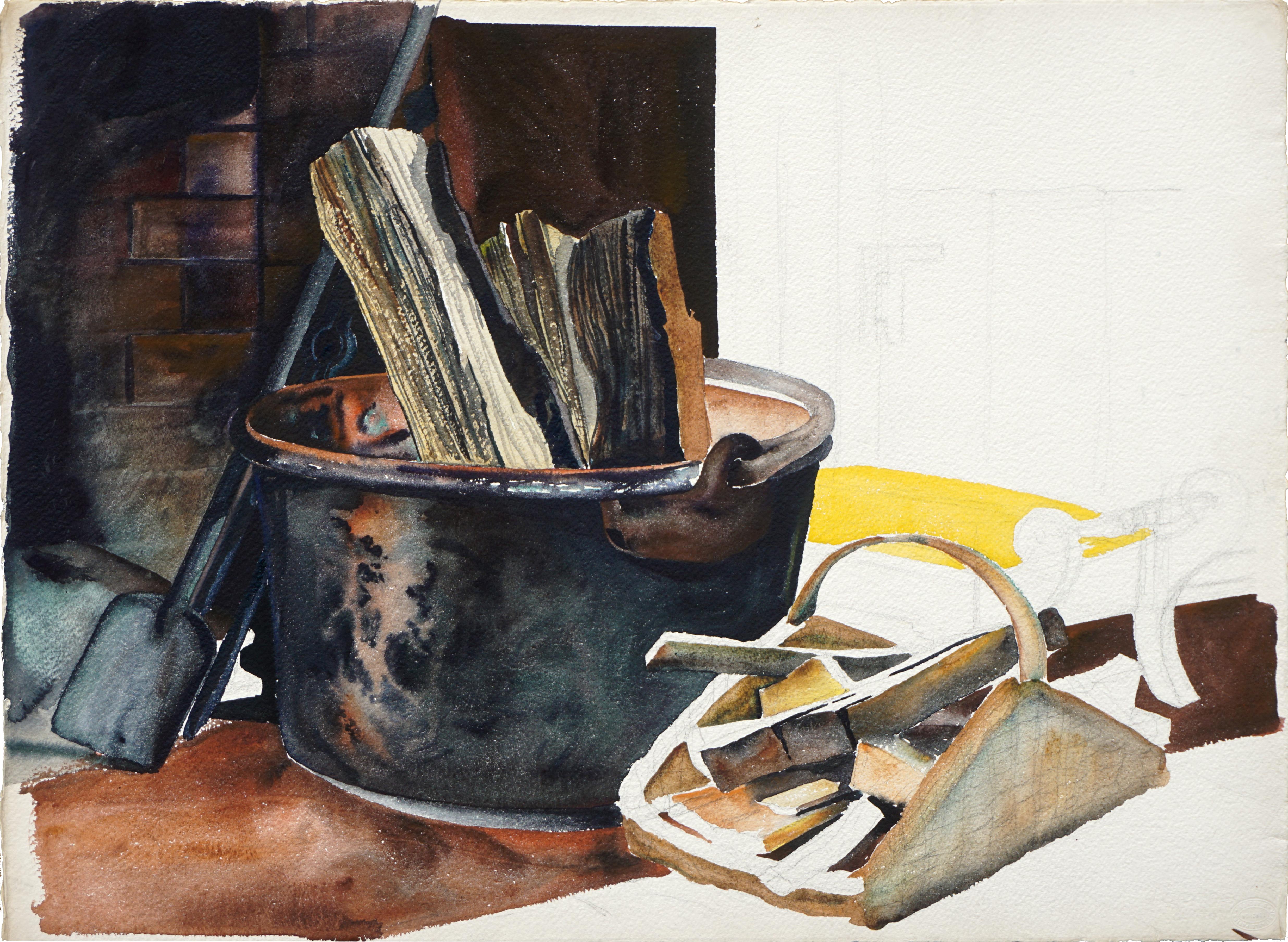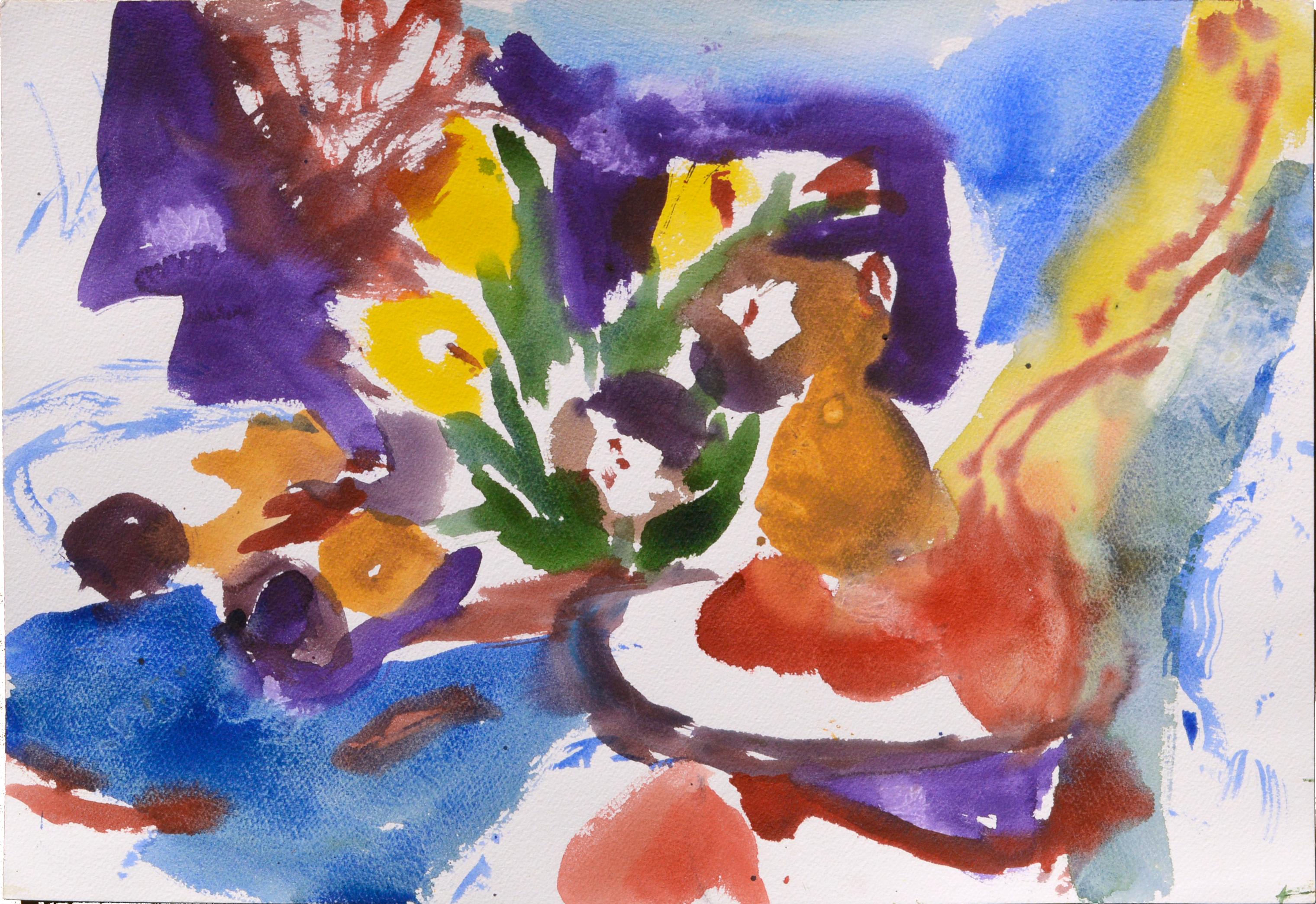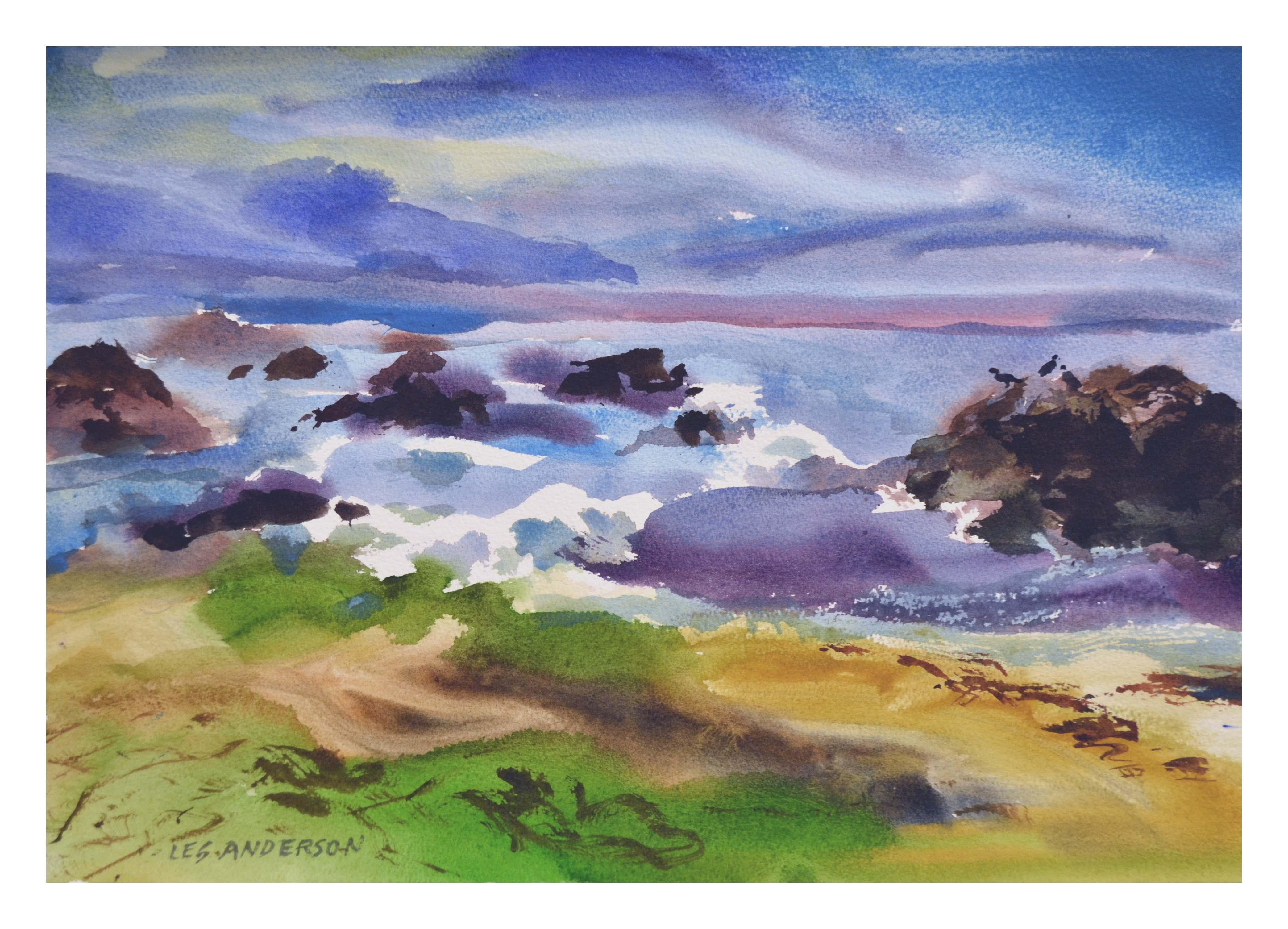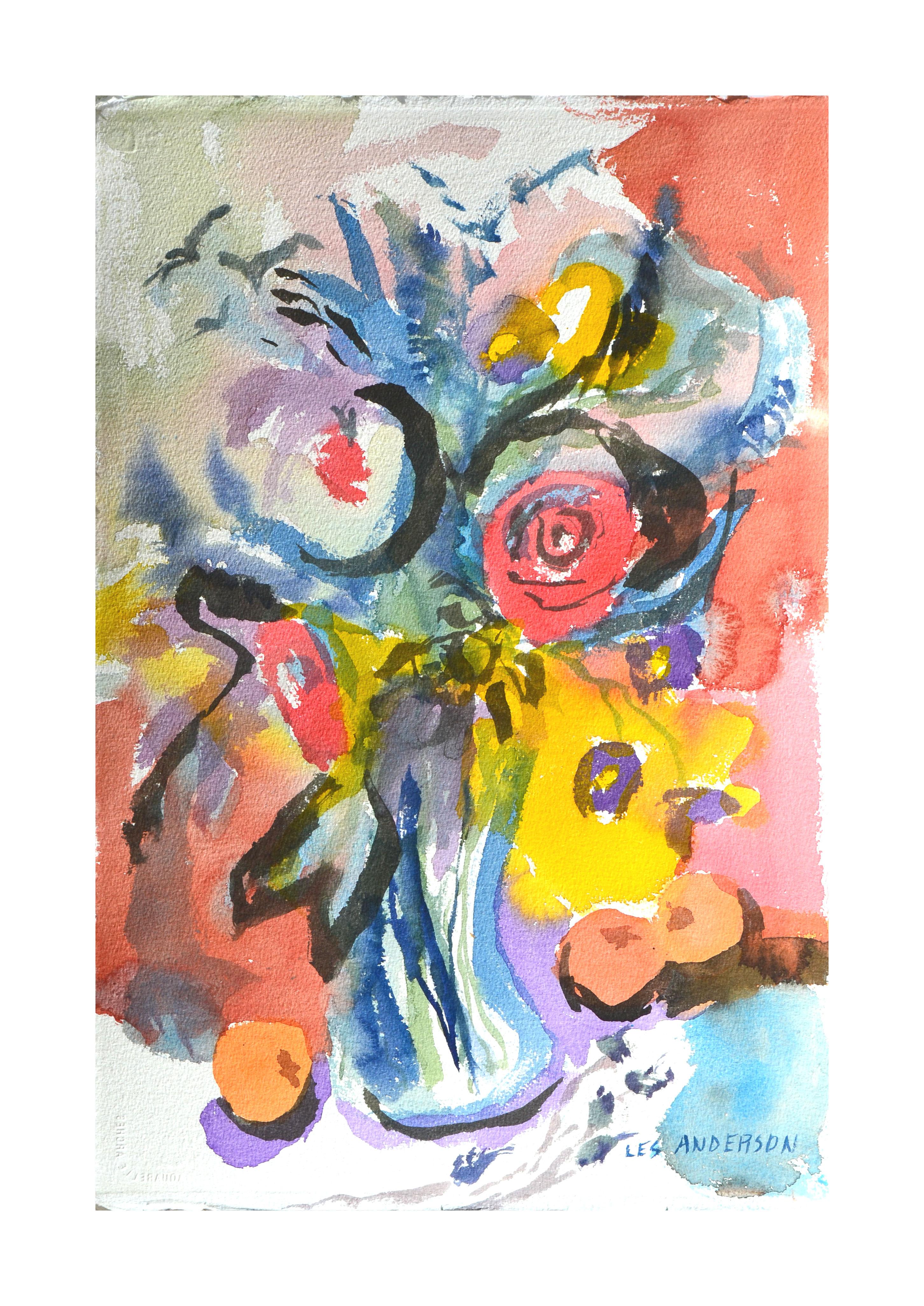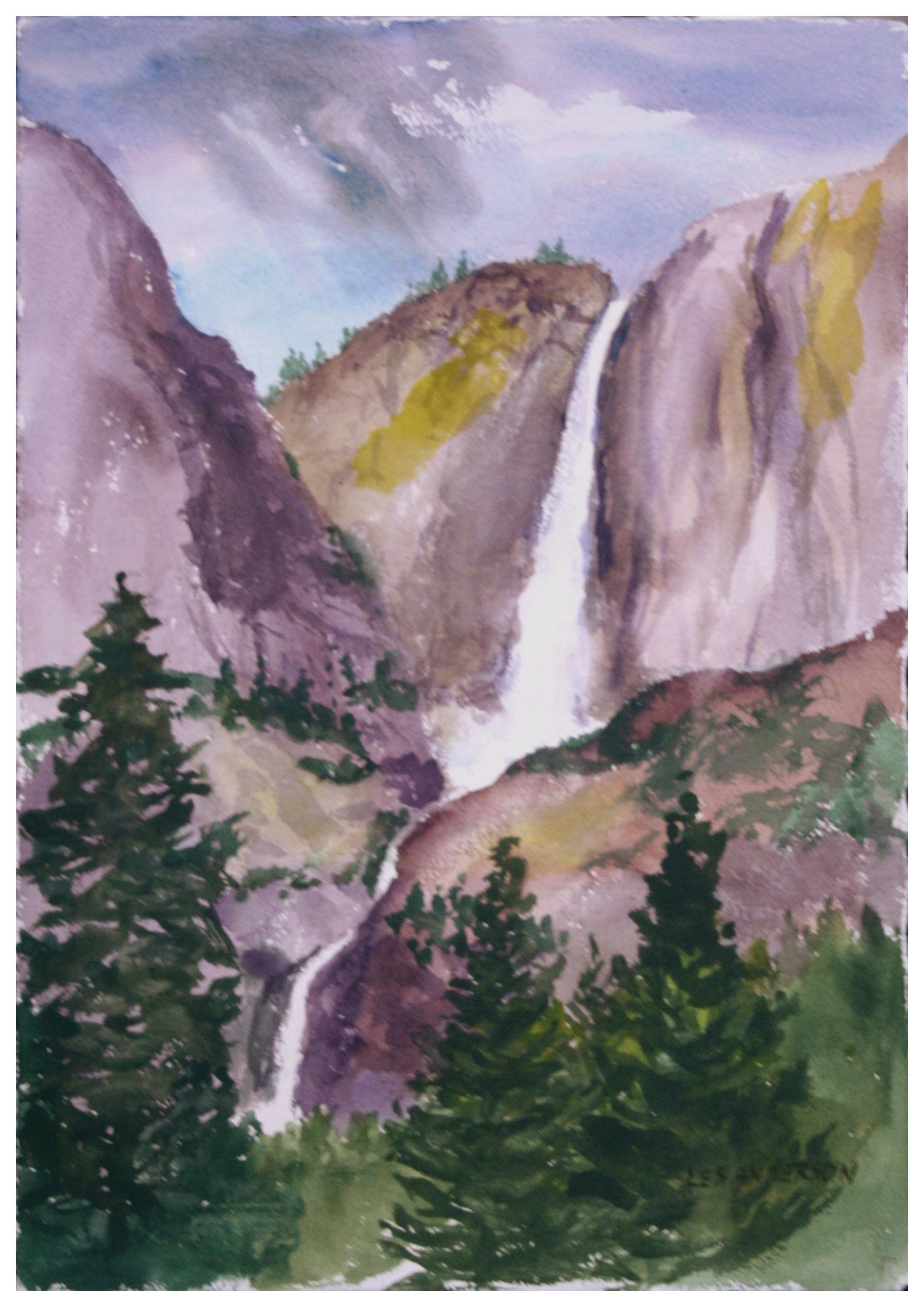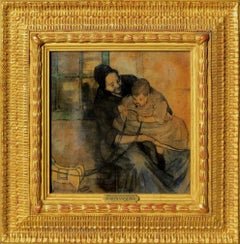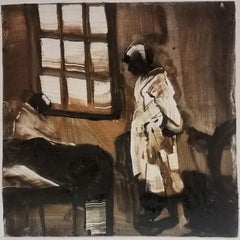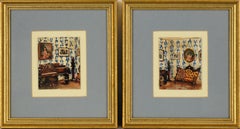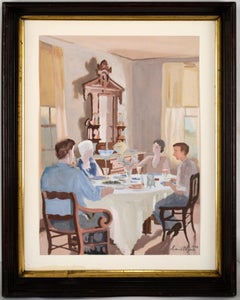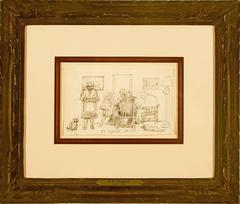
"88 Club"
View Similar Items
Want more images or videos?
Request additional images or videos from the seller
1 of 2
Edward Willis Redfield"88 Club"c. 1957
c. 1957
About the Item
- Creator:Edward Willis Redfield (1869-1965, American)
- Creation Year:c. 1957
- Dimensions:Height: 4 in (10.16 cm)Width: 6.5 in (16.51 cm)
- Medium:
- Movement & Style:
- Period:
- Condition:
- Gallery Location:Lambertville, NJ
- Reference Number:Seller: LAM01031stDibs: LU3741445603
About the Seller
5.0
Vetted Seller
These experienced sellers undergo a comprehensive evaluation by our team of in-house experts.
Established in 1997
1stDibs seller since 2014
36 sales on 1stDibs
Typical response time: 6 hours
More From This SellerView All
- "Reading"By Gershon BenjaminLocated in Lambertville, NJJim’s of Lambertville is proud to offer this artwork by: Gershon Benjamin (1899-1985) An American Modernist of portraits, landscapes, still lives, and the urban scene, Gershon Benj...Category
1940s Modern Figurative Drawings and Watercolors
MaterialsPastel
- "Central Park"By William Langson LathropLocated in Lambertville, NJJim’s of Lambertville is proud to offer this artwork. Signed. Complemented by a hand carved and gilt frame. William L. Lathrop (1859-1938) Deemed “Father of the New Hope Art Colony”, William Langson Lathrop was born in Warren, Illinois. He was largely self-taught, having only studied briefly with William Merritt Chase in 1887, at the Art Students League. Lathrop first moved east in the early 1880s, and took a job at the Photoengraving Company in New York City. While there, he befriended a fellow employee, Henry B. Snell. The two men became lifelong friends and ultimately, both would be considered central figures among the New Hope Art Colony. Lathrop's early years as an artist were ones of continuing struggle. His efforts to break through in the New York art scene seemed futile, so he scraped enough money together to travel to Europe with Henry Snell in1888. There he met and married an English girl, Annie Burt. Upon returning to New York, he tried his hand at etching, making tools from old saw blades. Even though his prints were extremely beautiful, he still was impoverished. Lathrop would return to his family in Ohio, before once again attempting the New York art scene. In 1899, with great trepidation, he submitted five small watercolors to an exhibit at the New York Watercolor Club. He won the Evans Prize, the only award given, and four of the five paintings were sold the opening night. At age forty Lathrop’s career would finally take off and he became an “overnight success Lathrop came to Phillips Mill for the first time in1898, to visit his boyhood friend, Dr. George Marshall. Shortly after, he and his family purchased the old miller’s house from Dr. Marshall. The Lathrop’s home became a social and artistic center for the growing New Hope colony. Tea and fascinating conversation was the “order of the day” every Sunday. This was a scene fondly recalled by many younger art students that Lathrop taught privately at Phillips Mill. It was common to see groups of his students painting and sketching along the banks of the canal or aboard his canal boat. He had previously taught in the Poconos and at the Lyme, Connecticut Summer School in1907, but Phillips Mill always remained Lathrop’s permanent address. In 1928, a committee headed by Lathrop was formed to purchase the old Phillips Mill building as a place to hold community gatherings and art exhibitions. The committee had success and in 1929 the Phillips Mill Community Association was formed. This became the center of the New Hope Art Colony holding annual exhibitions and still operating today. In 1930, Lathrop had built a sailboat he named the “Widge”. For eight consecutive seasons he sailed it along the coast of Long Island...Category
Early 20th Century American Impressionist Landscape Drawings and Waterco...
MaterialsGraphite, Paper
- "A Grandmother's Delight"By Martha WalterLocated in Lambertville, NJJim’s of Lambertville is proud to offer this artwork by: Martha Walter (1875-1976) Born in Philadelphia in 1875, Martha Walter attended Girls’ High School followed by the Pennsylva...Category
Early 1900s American Impressionist Figurative Drawings and Watercolors
MaterialsCharcoal, Paper, Watercolor
- "View of Lambertville"By Daniel GarberLocated in Lambertville, NJJim’s of Lambertville Fine Art Gallery is proud to present this piece by Daniel Garber (1880 - 1958). One of the two most important and, so far, the most valuable of the New Hope Sc...Category
1940s American Impressionist Landscape Drawings and Watercolors
MaterialsCharcoal, Paper
- "Bare Tree"By Daniel GarberLocated in Lambertville, NJJim’s of Lambertville Fine Art Gallery is proud to present this piece by Daniel Garber (1880 - 1958). One of the two most important and, so far, the most valuable of the New Hope School Painters, Daniel Garber was born on April 11, 1880, in North Manchester, Indiana. At the age of seventeen, he studied at the Art Academy of Cincinnati with Vincent Nowottny. Moving to Philadelphia in 1899, he first attended classes at the "Darby School," near Fort Washington; a summer school run by Academy instructors Anshutz and Breckenridge. Later that year, he enrolled at the Pennsylvania Academy of the Fine Arts. His instructors at the Academy included Thomas Anshutz, William Merritt Chase and Cecilia Beaux. There Garber met fellow artist Mary Franklin while she was posing as a model for the portrait class of Hugh Breckenridge. After a two year courtship, Garber married Mary Franklin on June 21, 1901. In May 1905, Garber was awarded the William Emlen Cresson Scholarship from the Pennsylvania Academy, which enabled him to spend two years for independent studies in England, Italy and France. He painted frequently while in Europe, creating a powerful body of colorful impressionist landscapes depicting various rural villages and farms scenes; exhibiting several of these works in the Paris Salon. Upon his return, Garber began to teach Life and Antique Drawing classes at the Philadelphia School of Design for Women in 1907. In the summer of that same year, Garber and family settled in Lumbertville, Pennsylvania, a small town just north of New Hope. Their new home would come to be known as the "Cuttalossa," named after the creek which occupied part of the land. The family would divide the year, living six months in Philadelphia at the Green Street townhouse while he taught, and the rest of the time in Lambertville. Soon Garber’s career would take off as he began to receive a multitude of prestigious awards for his masterful Pennsylvania landscapes. During the fall of 1909, he was offered a position to teach at the Pennsylvania Academy as an assistant to Thomas Anshutz. Garber became an important instructor at the Academy, where he taught for forty-one years. Daniel Garber painted masterful landscapes depicting the Pennsylvania and New Jersey countryside surrounding New Hope. Unlike his contemporary, Edward Redfield, Garber painted with a delicate technique using a thin application of paint. His paintings are filled with color and light projecting a feeling of endless depth. Although Like Redfield, Garber painted large exhibition size canvases with the intent of winning medals, and was extremely successful doing so, he was also very adept at painting small gem like paintings. He was also a fine draftsman creating a relatively large body of works on paper, mostly in charcoal, and a rare few works in pastel. Another of Garber’s many talents was etching. He created a series of approximately fifty different scenes, most of which are run in editions of fifty or less etchings per plate. Throughout his distinguished career, Daniel Garber was awarded some of the highest honors bestowed upon an American artist. Some of his accolades include the First Hallgarten Prize from the National Academy in 1909, the Bronze Medal at the International Exposition in Buenos Aires in 1910, the Walter Lippincott Prize from the Pennsylvania Academy and the Potter Gold Medal at the Art Institute of Chicago in 1911, the Second Clark Prize and the Silver Medal from the Corcoran Gallery of Art for “Wilderness” in 1912, the Gold Medal from the Panama-Pacific Exposition in San Francisco of 1915, the Second Altman Prize in1915, the Shaw prize in 1916, the First Altman Prize in 1917, the Edward Stotesbury Prize in1918, the Temple Gold Medal, in 1919, the First William A...Category
Early 20th Century American Impressionist Landscape Drawings and Waterco...
MaterialsCharcoal, Paper
- "Horse Cart"By Daniel GarberLocated in Lambertville, NJJim’s of Lambertville Fine Art Gallery is proud to present this piece by Daniel Garber (1880 - 1958). One of the two most important and, so far, the most valuable of the New Hope Sc...Category
Early 20th Century American Impressionist Landscape Drawings and Waterco...
MaterialsGraphite, Paper
You May Also Like
- Sleepwalking #23, earth tone, brown, gestural, abstract brushstrokesBy Tom BennettLocated in Brooklyn, NYMonotype on paper Dramatic disrupted realism imagery from Tom Bennett’s series of monochromatic monotypes, blending surrealistic mindscapes with stark realism About Tom Bennett: With quick brushstrokes, Tom Bennett creates representational images of human figures and animals, emphasizing movement in a manner reminiscent of Lucien Freud, Edgar Degas and the photographer Eadweard Muybridge. Elongated and blurry, the horse racing up a hill (Canter Fritz, 2002) and the sinister cat landing a leap (Chien Blanc, 1998) elicit a sense of foreboding enhanced by Bennett’s somber palette; his female figures too reflect a grim sense of humor with their distorted nude bodies. The face of Untitled Figure (1997), for example, is obscured by layers of dark paint. Classically trained as a painter, he initially worked in oil on canvas but discovered that monotype printing enabled him to “literally push the image around,” creating an essential element of motion. To overcome the limited scale of monotypes, however, he switched to painting on slick-surfaced plastic. Tom Bennett’s practice is rooted in the classical tradition where painting and drawing from life is highly regarded. Bennett’s work is heavily influenced by Francis Bacon, Frank Auberbauch and foremost his father, Harry Bennett, who was also an artist. Tom’s time living abroad in Spain and traveling through Eastern Europe and Africa provided the artistic freedom to explore many of the techniques and subject matter that continue to define his practice. Bennett was born and raised in Connecticut. His mediums include monotypes, oil on paper, canvas or styrene board. In a technique that Tom started over 4 years ago, several of his monotypes have been painted over with oil paint using a palette knife, brush, or his fingers to re-purpose the underlying image. These works are a testament to Bennett’s ability to quickly and concisely compose an image with expressive brush strokes, foreshortened figures and expertly rendered light. Tom’s work has been featured in group and solo exhibitions worldwide. Bennett lives and works in Brooklyn, New York. He is currently represented by Tabla Rasa...Category
Early 2000s American Impressionist Figurative Drawings and Watercolors
MaterialsMonotype, Paper
- Pair of Interior Scenes of a Victorian Home - Watercolor on Heavy PaperLocated in Soquel, CAStately pair of watercolors by David Mode Payne (American, 1907-1985). The scene depicted is an interior of an opulent room, with finely crafted furni...Category
1940s American Impressionist Interior Drawings and Watercolors
MaterialsLaid Paper, Watercolor
- Family Dinner Time 1932 American Classic Interior DesignLocated in Soquel, CAClassic Interior design and Family Dinner by Architectural Digest illustrator David Mode Payne (American, 1907-1985). The scene depicted is an interio...Category
1930s American Impressionist Figurative Drawings and Watercolors
MaterialsLaid Paper, Watercolor
- Abstract Still Life with Fruit in Watercolor on PaperBy Les AndersonLocated in Soquel, CAAbstract Still Life with Fruit in Watercolor on Paper Colorful still life with fruit by Les (Leslie Luverne) Anderson (American, 1928-2009). Several pieces of fruit appear to be sitting on a table with a purple cloth. The scene is highly abstracted, straddling the line between impressionism and non-representational. The background is brightly colored, adding vibrancy to the scene. Signed on verso and acquired from the estate of Les Anderson in Monterey, California. Unframed. Paper size: 14"H x 20"W Les (Leslie Luverne) Anderson(American, 1928-2009) owned and operated the Bear Flag Gallery in San Juan...Category
1980s American Impressionist Still-life Drawings and Watercolors
MaterialsWatercolor, Paper
- Abstract Still Life with Bouquet and Teapot in Watercolor on PaperBy Les AndersonLocated in Soquel, CAAbstract Still Life with Bouquet and Teapot in Watercolor on Paper Colorful still life with flowers and a teapot by Les (Leslie Luverne) Anderson (American, 1928-2009). A tall, brig...Category
1980s American Impressionist Still-life Drawings and Watercolors
MaterialsPaper, Watercolor
- Abstract Still Life with Bouquets and Fruit in Watercolor on PaperBy Les AndersonLocated in Soquel, CAAbstract Still Life with Bouquets and Fruit in Watercolor on Paper Colorful still life with two bouquets of flowers by Les (Leslie Luverne) Anderson (American, 1928-2009). A tall, b...Category
1980s American Impressionist Still-life Drawings and Watercolors
MaterialsPaper, Watercolor
Recently Viewed
View AllMore Ways To Browse
Monhegan Watercolors
Panama Bold
Thomas Sargent
Fine Rugs London
Monhegan Island Watercolors
Hooked Rug French
Thomas Willis
Tony Kelly
John Breed
Boothbay Harbor
Elise Vintage
Signed American Hooked Rugs
Boothbay Harbor Paintings
William Willis
Crafted By Franklin Hand
19th Century Watercolours Of Interiors
Antique Interior Drawings and Watercolors
Architectural Drawings Cathedrals
